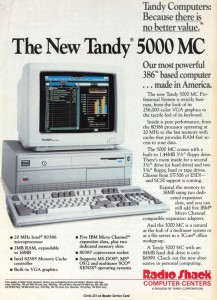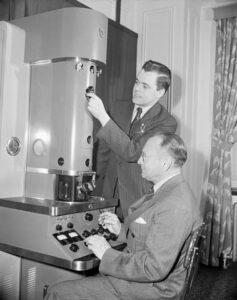Chernobyl Virus Melts Down PCs
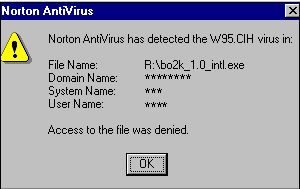 April 26, 1999
April 26, 1999
The first known virus to target the flash BIOS of a PC, the CIH/Chernobyl Virus triggers its payload on this day, erasing hard drives and disabling PCs primarily in Asia and Europe. One of the most destructive viruses in history, it is estimated that 60 billion PCs were infected worldwide causing $1 Billion in damages.
The virus had been created exactly one year earlier on April 26, 1998 by Taiwanese student Chen Ing-hau and set to trigger its destructive payload exactly one year later. It began to spread in the wild and was first discovered in June of 1998, given the name CIH due to the author’s initials discovered in the virus code. From this time forward it was reported that a variety of companies accidentally distributed the virus through various downloads, updates, and CDs. When the virus triggered on this date it just happened to coincide with the date of the Chernobyl disaster in 1986 and therefore the press began to call it the Chernobyl virus, even though there has never been any evidence to show that this date was chosen intentionally for this reason.
Do You Yahoo?
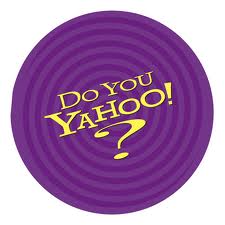 April 25, 1996
April 25, 1996
Yahoo! begins advertising its web-based search service on national television, featuring the tag line “Do You Yahoo?”. The ads first air during Late Night with David Letterman, Saturday Night Live, and Star Trek. This was a very early example of the Internet entering into the mainstream.
Hubble Deployed
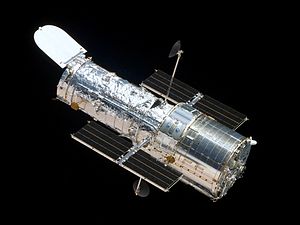 April 25, 1990
April 25, 1990
The crew of the Space Shuttle Discovery deploys the $2.5 billion Hubble Space Telescope. There will be initial difficulties caused by a flaw in the design of the telescope’s main mirror. Image correction software will keep the telescope useful until corrective optics are installed December of 1993.
A Crazy Day for Apple
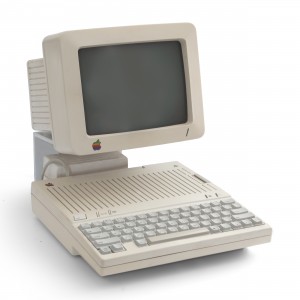 April 24, 1984
April 24, 1984
On the same day in 1984, Apple introduces the Apple IIc computer, announces Mac sales numbers, and discontinues the Apple III line.
The Apple IIc was Apple’s first attempt at a portable computer. Dealers place orders for more than 52,000 units on the first day. Apple also announces that over 60,000 Macs have been sold since their introduction in January that year. In contrast, the Apple III line only sold an estimated 120,000 units in the four years since it was introduced, losing Apple about $60 million dollars.
First YouTube Video
 April 23, 2005
April 23, 2005
The first video uploaded to YouTube, “Me at the zoo,” is posted on April 23, 2005 at 8:27 PM by co-founder Jawed Karim. For now being a piece of history, the video is actually pretty dumb.
Note to future entrepreneurs: what you do may be for posterity. Choose wisely.
Mosaic 1.0
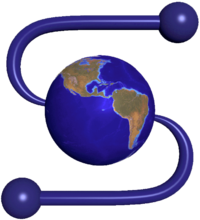 April 22, 1993
April 22, 1993
Version 1.0 of the web browser Mosaic is released by the National Center for Supercomputing Applications. It’s the first software to provide a graphical user interface for the emerging World Wide Web, including the ability to display inline graphics. The lead Mosaic developer is Marc Andreesen, one of the future founders of Netscape.
My first experience with the World Wide Web was in 1993 using Mosaic on a Mac in my dorm’s computer lab. I had no idea what I had discovered until a few months later.
IBM Licenses PC Patents
The Tandy Corporation holds a press conference to announce plans to build clones of IBM’s PS/2 system computers. The conference comes soon after IBM’s announcement that it would license patents on key PC technologies. IBM made this decision as they realized they were losing control of the “IBM-compatible” PC market and could make more money licensing the technologies. Within five years, IBM clones will become more popular than the original IBM machines themselves. Eventually IBM would leave the PC manufacturing business altogether, selling their PC division to Lenovo in 2005.
Windows 98 is Plug and … Whoa?
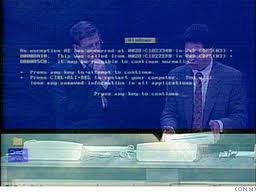 April 20, 1998
April 20, 1998
During the COMDEX Spring ’98 and Windows World shows in Chicago, a public demonstration of the soon-to-be released Windows 98 goes awry when Bill Gates’ assistant causes the operating system to crash after plugging in a scanner. Instead of showing the plug-and-play capabilities they were trying to demonstrate, a “Blue Screen of Death” is visible by the entire audience which immediately erupts in laughter. After several seconds, Bill Gates famously responded, “That must be why we’re not shipping Windows 98 yet.”
Ironically, the assistant, Chris Capossela, has moved up the executive ranks at Microsoft, all the way to Executive VP and Chief Marketing Officer. For Microsoft’s sake, hopefully he’ll present a much better marketing image then he did that fateful day!
Demonstration of First Practical Electron Microscope
Vladimir Zworykin, research director at RCA, holds a public demonstration of the first practical electron microscope. While the electron microscope had originally been invented in 1931, the first model was only able to produce a magnification of 400X. RCA’s model was the first to create a magnification of 100,000X, which was truly the first practical application of an electron microscope. This early model was 10 feet high and weighed half a ton. That thing was huge, especially considering it was meant to magnify really tiny things!
Vladimir Zworykin is also famous for being one of the inventors of the television.
Moore’s Law Published
 April 19, 1965
April 19, 1965
Electronics magazine publishes an article by Gordon Moore, head of research and development for Fairchild Semiconductor and future co-founder of Intel, on the future of semiconductor components. In the article, Moore predicts that transistor density on integrated circuits will double every eighteen months for “at least” the next ten years. This theory will eventually come to be known as Moore’s Law and has largely held true to this day. Controversy exists over whether Moore’s Law remains applicable, however time will tell just how long Moore’s Law will continue to remain true.

